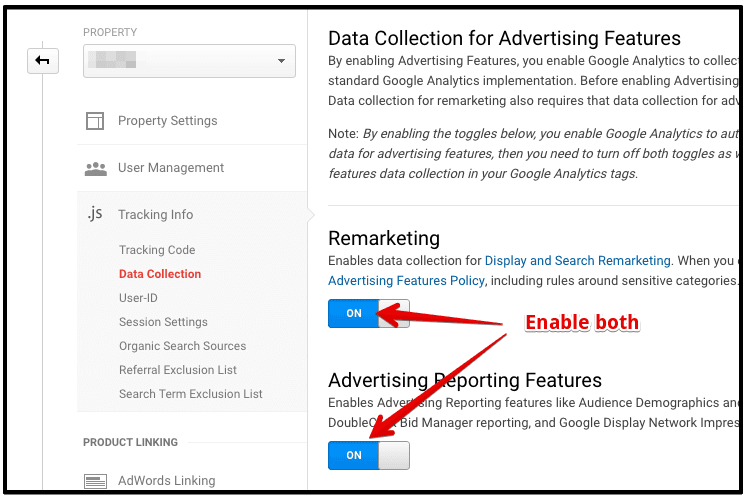Using Remarketing in Google Analytics: A Comprehensive Guide
Harnessing remarketing in Google Analytics supplies businesses a critical side in connecting to potential clients. The ability to target people who have actually already connected with your site presents a distinct chance for tailored marketing initiatives. By comprehending exactly how to craft audience listings and release them effectively, services can dramatically enhance their conversion rates. The complexities of setting up and optimizing remarketing projects need a detailed understanding of target market segmentation and performance evaluation. This guide will certainly clarify the crucial actions associated with harnessing the full potential of remarketing in Google Analytics, causing boosted advertising outcomes.
Recognizing Remarketing in Google Analytics
Remarketing in Google Analytics permits organizations to strategically target individuals who have actually formerly engaged with their web site or mobile application. By leveraging data from Google Analytics, businesses can produce tailored remarketing checklists based on user actions, such as web pages checked out, actions taken, or specific goals accomplished. This powerful device enables organizations to re-engage with individuals that have actually shown passion in their product and services, inevitably increasing the possibility of conversion.
Recognizing the different kinds of remarketing methods is important for an effective project - What Is “Remarketing” In Google Analytics?. Google Analytics offers different alternatives, including conventional remarketing, dynamic remarketing, and remarketing checklists for search advertisements (RLSA) Each kind offers an unique purpose and can be customized to satisfy specific advertising objectives
Furthermore, evaluating the efficiency of remarketing campaigns is important for enhancing results. Google Analytics gives useful insights into the efficiency of various remarketing approaches, enabling businesses to make data-driven choices and improve their targeting strategy. By continuously adjusting and checking remarketing initiatives based on analytics data, organizations can make best use of ROI and drive success in their marketing efforts.
Establishing Remarketing Projects

After establishing target market lists, the following step is to link Google Analytics with Google Ads. By connecting these two systems, companies can perfectly transfer audience checklists from Google Analytics to Google Advertisements for remarketing functions. This combination permits for more precise targeting and much better campaign efficiency.
As soon as the accounts are linked, organizations can create remarketing projects in Google Advertisements utilizing the audience provides formerly defined in Google Analytics. These projects can be tailored with specific ad creatives, messaging, and bidding strategies to effectively re-engage with past site visitors and drive conversions. By following these steps, organizations can take advantage of the power of remarketing to enhance their advertising initiatives and increase ROI.
Using Target Market Division Techniques

Predefined sectors in Google Analytics allow you to swiftly analyze usual target market categories like new users, returning users, or users who finished a specific objective on your web site. Custom sectors, on the other hand, enable you to develop distinct sections based on certain criteria that are essential to your company goals. Dynamic remarketing lists immediately adjust based on individual actions, showing customized ads to users who have actually interacted with your website particularly methods.
Analyzing Remarketing Efficiency Metrics
Upon assessing the efficiency of remarketing campaigns in Google Analytics, the evaluation of vital efficiency metrics provides useful insights right into target market interaction and conversion prices. By diving into metrics such as click-through rates (CTR), conversion prices, price per purchase (CERTIFIED PUBLIC ACCOUNTANT), and return on advertisement spend (ROAS), online marketers can evaluate the success of their remarketing efforts. Examining these metrics makes it possible for online marketers to enhance campaigns, refine audience targeting, and allocate budget plans efficiently to improve total remarketing performance.
Maximizing Remarketing Methods
When refining remarketing techniques in Google Analytics, concentrating on target market division is paramount for accomplishing project success. By splitting your target market right into particular sections based upon their actions, demographics, or interests, you can tailor your ads better per team. This targeted approach enhances the possibility of involving customers that have actually currently revealed passion in your solutions or items, bring about greater conversion prices.
An additional crucial aspect of maximizing remarketing strategies is constantly site screening and refining your projects (What Is “Remarketing” In Google Analytics?). A/B screening various advertisement creatives, messaging, or deals can aid you recognize what reverberates best with your audience and drives one of the most conversions. By evaluating the performance of these examinations in Google Analytics, you can make data-driven choices to maximize your remarketing efforts better
Furthermore, leveraging dynamic remarketing can significantly enhance your campaign results. This feature permits you to reveal tailored advertisements to users based on their past interactions with your internet site, showcasing solutions or items they have previously seen. By providing click site customized web content to individuals based on their habits and interests, vibrant remarketing can assist enhance engagement and drive conversions.
Verdict
Finally, harnessing remarketing in Google Analytics is a tactical approach to target customers that have previously engaged with an internet site. By producing customized target market listings and using audience division methods, services can optimize remarketing projects for boosted conversion rates. Analyzing efficiency metrics and continuously enhancing strategies are critical for making the most of the performance of remarketing initiatives.
Google Analytics provides numerous alternatives, including standard remarketing, dynamic remarketing, and remarketing lists for search advertisements (RLSA)After setting up target market lists, the following step is to connect Google Analytics with Google Ads. By connecting these two platforms, services can perfectly move audience checklists from Google Analytics to Google Ads for remarketing functions.As soon as the accounts are linked, services can develop remarketing campaigns in Google Advertisements utilizing the target market notes formerly specified in Google Analytics.When refining remarketing methods in Google Analytics, focusing on audience segmentation is extremely important for accomplishing project success.
 Taran Noah Smith Then & Now!
Taran Noah Smith Then & Now! Destiny’s Child Then & Now!
Destiny’s Child Then & Now! Jurnee Smollett Then & Now!
Jurnee Smollett Then & Now! Richard Dean Anderson Then & Now!
Richard Dean Anderson Then & Now! Teri Hatcher Then & Now!
Teri Hatcher Then & Now!